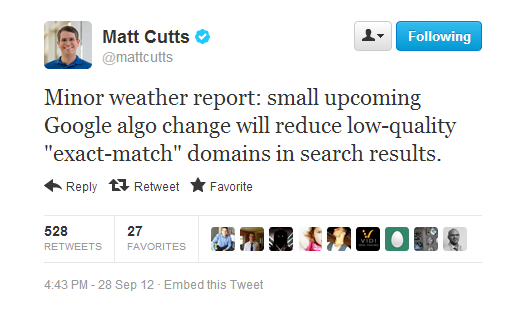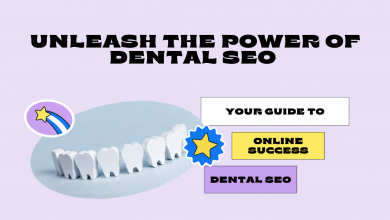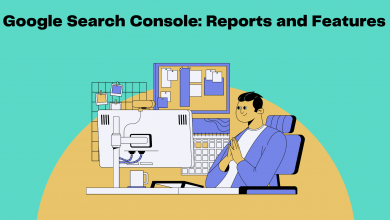![URL Structure -How to Create SEO Friendly URLs [Step-by-step]](https://biggas.tn/wp-content/uploads/2021/10/Dore-et-Vert-Vintage-Voeux-Couverture-Facebook.png)
Let’s see how Google thinks about the importance of SEO-friendly URLs. And start learning how to create a URL Structure for your brand.
Your website’s URL can have a significant impact on its success ?
Are Keywords In URLs A Ranking Factor in Google?
Example of a bare URL:
www.cars.com/bmw-red-car
Keywords in Domain Are Ranking Factors – URL Structure
Before google’s 2012 EMD update it was easy to rank websites using “Exact Match Domains”. Website addresses that exactly matched what searchers were looking for.
For example, if you wanted to get to the top of google for “Used Cars for Sale” you could just set up www.UsedCarsforSale.com. we could rank sites within a day or two based purely on the domain in some cases. We didn’t have to worry about troublesome things like content and links.
The EMD Update
On September 28, 2012, Google released an update that aimed to reduce the ranking ability of poor-quality EMDs from ranking.

But even without the EMD benefit, it can often make sense to use a more descriptive domain for your site. If a fictional law firm Sir Alex & Son, based in New York city, has the choice between www.lawnewyork.com and www.siralexandson.com.
The more instantly descriptive domain name would be the first. If google searcher types “law in New York ” they’re going to see a website address that exactly matches what they’re looking for and the website clearly relevant.
John Mueller: Keywords In URLs Are Overrated
There’s no ranking benefit associated with having keywords in a domain name. Many businesses have, at some point, bought up large numbers of Exact Match Domains related to their industry. “Is there any benefit to pointing all of these domains at our main website?” The answer is no.
Difference between Top Level Domains (TLDs)
What’s the diffrenece between .com .co.uk .net .org .fr? Should you go for a .com or .fr ?
Google treats all TLDs equally. A .com won’t get you a ranking benefit over a .xyz. But keep in mind that the public is extremely unfamiliar with nontraditional TLDs.So could struggle to find or remember your URL.
URL Structure
Hyphens and Underscores
Avoid the use of hyphens in your domain name because people can be seen as spam indicators.
Hyphens: www.cars.com/bmw-red-car
But hyphens in-page URLs are good and preferable to underscores.
Underscores: www.cars.com/bmw_red_car
Google recognizes hyphens as separating words, it does not with underscores. So bmw-red-car would be seen as ” bmw red car ” and bmw_red_car would be seen as “bmwredcar“.
Capital Letters
Url structure-1 : www.cars.com/BMW-red-car
Url structure-2 : www.cars.com/bmw-red-car
Page 1 and page 2 would be two different pages. So we recommend you keep letters lower. Because using upper case characters can confuse your users and result in errors on your site.Which is bad for the user experience and can result in the user leaving your site.
Avoid Using The Date In Your URLs
Avoid using the date of your Url structure can help you rank higher and get more traffic as time goes on.
example.com/top-cars-2020
Try deleting the year and simply go with:
example.com/top-cars
Make sure to update the content frequently to keep it fresh and relevant to your audience. The benefit of updating the content and the title year after year and keeping the same URL is that all of the links that went to the previous year of content remain.
Domain Length
We haven’t seen any conclusive proof of a relationship between domain length and SEO. But choosing a domain name less than 16 characters long makes sense for many reasons.
Firstly it’s easier to remember. Secondly, long domains can cause problems in AdWords ads. As they can be too long to fit the Display URL section of an ad.And keeping URLs shorter makes them user friendly and easier to share.
URL Structure – Google Is Flexible on Trailing Slash
How Google codes URLs. Here’s an example :
This URL features the .html at the end and is clearly a web page:
https://webmasters.googleblog.com/2020/11/timing-for-page-experience.html
This URL ending with a trailing slash is a category page:
https://webmasters.googleblog.com/2020/11/
And this is the container for the month year of 2020:
https://webmasters.googleblog.com/2020/
The above examples conform with the standard recommendation to use trailing slashes at the end of a category directory and not use them at the end of the URL when it’s a web page.




